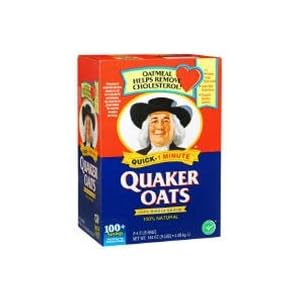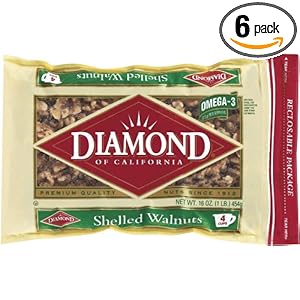Welcome to MaomaoMom kitchen, share some healthy diet tips here with you.
一、Almond Milk
I really enjoyed reading Jessica Wu’s book on —【Feed Your Face: Younger, Smoother Skin and a Beautiful Body in 28 Delicious Days】。
She shared how she overcame her skin problems as a teenage。There are many pratical suggestions on how to have smooth and younger skin.
After reading her book, we stopped drinking milk and changed to this Almond milk.
Here is the Almond Milk we have now and you can get it from Amazon
二、Oats
Oats is another good food, we should have in our daily diet。
Oatmeal and oat bran are significant sources of dietary fiber. This fiber contains a mixture of about half soluble and half insoluble fibers. One component of the soluble fibre found in oats is beta-glucans, a soluble fiber which has proven effective in lowering blood cholesterol.So include oats in your daily diet to have all health benifits.
I usually use this oneOats。
3、Walnuts
Walnuts,I alwanys have a bag of walnuts handy at home, add of some to your recipes.
Health benefits of Walnuts
The nuts are rich source of energy and contain health benefiting nutrients, minerals, antioxidants and vitamins that are essential for optimum health.
They are rich in monounsaturated fatty acids (about 72%) like oleic acid and an excellent source of all important omega-3 essential fatty acids like linoleic acid, alpha-linolenic acid (ALA) and arachidonic acids. Regular intake of walnuts in the diet helps to lower total as well as LDL or “bad cholesterol” and increases HDL or “good cholesterol” levels in the blood. Research studies suggest that Mediterranean diet that is rich in mono-unsaturated fatty acids, and omega-3 fatty acids help to prevent coronary artery disease and strokes by favoring healthy blood lipid profile.
Eating just as much as 25 g each day provides about 90% of RDI (recommended daily intake) of omega-3 fatty acids. Research studies have suggested that n-3 fatty acids by their virtue of anti-inflammatory action help to lower the risk of blood pressure, coronary artery disease, strokes and breast, colon and prostate cancers.
They are rich source of many phyto-chemical substances that may contribute to their overall anti-oxidant activity, including melatonin, ellagic acid, vitamin E, carotenoids, and poly-phenolic compounds. These compounds have potential health effects against cancer, aging, inflammation, and neurological diseases.
Scientists at University of Scranton, Pennsylvania had recently discovered that walnuts have highest levels of popyphenolic antioxidants than any other common edible nuts. 100 g of walnuts contain 13541 µmol TE (Trolex equivalents) of oxidant radical absorbance capacity (ORAC). Eating as few as six to seven average size nuts a day could help scavenge disease causing free radicals from the body.
In addition, they are an excellent source of vitamin E, especially rich in gamma-tocopherol; contain about 21 g per 100 g (about 140% of daily-required levels). Vitamin E is a powerful lipid soluble antioxidant, required for maintaining the integrity of cell membrane of mucus membranes and skin by protecting it from harmful oxygen-free radicals.
These nuts are packed with many important B-complex groups of vitamins such as riboflavin, niacin, thiamin, pantothenic acid, vitamin B-6, and folates.
They also very are rich source of minerals like manganese, copper, potassium, calcium, iron, magnesium, zinc, and selenium. Copper is a cofactor for many vital enzymes, including cytochrome c-oxidase and superoxide dismutase (other minerals function as co-factors for this enzyme are manganese and zinc). Zinc is a co-factor in many enzymes that regulate growth and development, sperm generation, digestion and nucleic acid synthesis. Selenium is an important micronutrient, which functions as a co-factor for anti-oxidant enzymes such as glutathione peroxidases.
Walnut’s oil has flavorful nutty aroma and has excellent astringent properties. Applied locally, it helps to keep skin well protected from dryness. It has also been used in cooking, and as “carrier or base oil” in traditional medicines in massage therapy, aromatherapy, in pharmaceutical and cosmetic industry.
Munch a handful of walnuts a day and you will have enough recommended levels of minerals, vitamins, and protein.
四、小米(Millet)
Milletprovides a host of nutrients, has a sweet nutty flavor, and is considered to be one of the most digestible and non-allergenic grains available. It is one of the few grains that is alkalizing to the body.
12 Health Benefits:
1. Millet is alkaline and it digests easily.
2. The Hunzas – who live in a remote area of the Himalayan foothills and are known for their excellent health and longevity – enjoy millet as a staple in their diet.
3. Millet will hydrate your colon to keep you from being constipated.
4. Millet acts as a prebiotic feeding microflora in your inner ecosystem.
5. The serotonin in millet is calming to your moods.
6. Millet is a smart carb with lots of fiber and low simple sugars. Because of this it has a relatively low glycemic index and has been shown to produce lower blood sugar levels than wheat or rice. (Kamari and Sumathi, 2002)
7. Magnesium in millet can help reduce the effects of migraines and heart attacks.
8. Niacin (vitamin B3) in millet can help lower cholesterol.
9. Millet consumption decreases triglycerides and C-reactive protein. Scientists in Seoul, South Korea concluded that millet may be useful in preventing cardiovascular disease. Nutrition Research. April 2010; 30(4):290-6.
10. All millet varieties show high antioxidant activity. A team of biochemists analyzed the antioxidant activity; all varieties showed high antioxidant activity. Journal of Agricultural and Food Chemistry, 9 June 2010; 58(11):6706-14.
11. Millet is gluten-free and non-allergenic. A great grain for sensitive individuals.
12. Millet’s high protein content (15 percent) makes is a substantial addition to a vegetarian diet.
Very cold day, you can have a bowl of Walnut millet congee..










 My favorite serum, to deliver visibly firmer, more contoured, lifted, and defined skin!
My favorite serum, to deliver visibly firmer, more contoured, lifted, and defined skin!  WellSpa IO/RenuSpa IO- is an innovative beauty and wellness device. It provides relaxing, revitalizing, and restorative benefits by helping depuff the skin through stimulation as well as relaxing the skin and providing a comfortable massage. This device also helps minimize the appearance of cellulite, and visibly firms and tightens skin for a more youthful appearance.
WellSpa IO/RenuSpa IO- is an innovative beauty and wellness device. It provides relaxing, revitalizing, and restorative benefits by helping depuff the skin through stimulation as well as relaxing the skin and providing a comfortable massage. This device also helps minimize the appearance of cellulite, and visibly firms and tightens skin for a more youthful appearance. 




Pingback: Onion eMail
Pingback: lost mary mango
Pingback: my profile